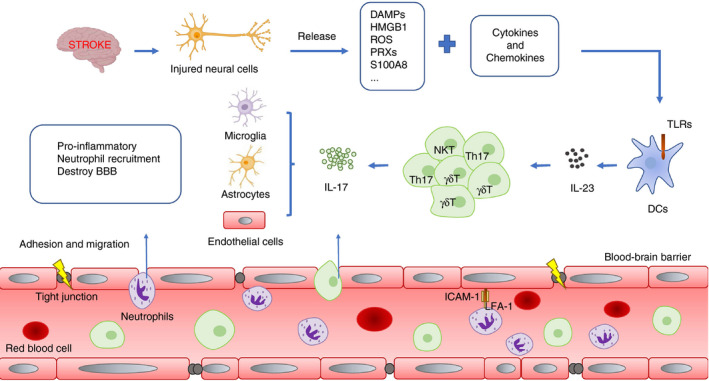Figure 3.

Production and function of IL‐17 after stroke. After stroke, cerebral ischaemia and hypoxia lead nerve cells necrosis and release a large amount of DAMPs and inflammation factors. When DAMPs are combined with TLRs on DCs, it promotes the DC‐derived IL‐23 releasing from DCs and then IL‐23 promotes the release of IL‐17 by γδ T cells, Th17 cells NKT cells and so on. Finally, IL‐17 leads to poor prognosis of stroke in three ways: (1) inducing the secretion of pro‐inflammatory factors; (2) recruiting neutrophils to infiltrate into CNS; (3) impairing the integrity of BBB.
